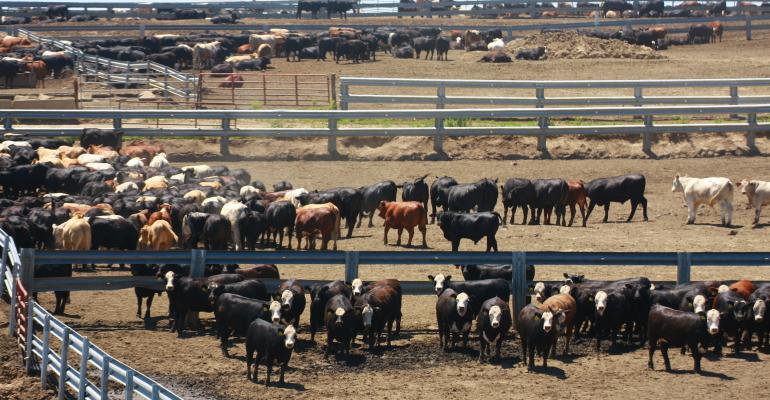Extreme weather affecting steer and heifer carcass weights and average daily gain.
April 12, 2019

The U.S. Department of Agriculture has estimated that year-to-date U.S. beef production is down 1.0% year over year. According to Derrell Peel, Oklahoma State University Extension livestock marketing specialist, adverse weather has been somewhat responsible for slowed cattle finishing.
USDA also recently reported that total cattle slaughter is up 0.7% year to date, with steer slaughter down 3.9% and heifer slaughter up 7.6%. Dairy cow slaughter is up 5.0%, beef cow slaughter is up 1.1% and bull slaughter is down 8.8% compared to the same period last year. Peel said slaughter totals across classes mostly reflect underlying herd dynamics.
“Weather impacts are more evident in cattle carcass weights,” he said. “Carcass weights are declining seasonally thus far but are well below year-ago levels.”
Peel relayed that weekly data show that steer carcass weights are 12 lb. below a year ago, heifer carcasses are down 11 lb. and cow carcasses are 18 lb. lighter year over year.
“Lighter cow carcass weights are particularly surprising given that dairy cows are making up a bigger proportion of cow slaughter and are typically heavier than beef cows,” he said.
Steer carcass weights year to date have averaged 866 lb., down 7.3 lb. year over year, and heifer carcasses are at 804 lb.,11.7 lb. lighter compared to last year. Cow carcasses are averaging 645 lb., 14.3 lb. lighter than last year.
Feedlot survey data from Kansas also show the weather impacts in more detail, Peel noted. For the month of February, average daily gain (ADG) in closed-out steer pens was 3.43 lb., down slightly from ADG of 3.48 lb. one year ago. Feed conversion was sharply higher, at 7.08 lb. of feed per pound of gain (F/G), compared to F/G of 6.22 last year. Peel said this indicates the additional feed required to support animal maintenance and growth.
Further, he pointed out that steer death loss has been higher as well, at 1.68% this year versus 1.59% last year.
Last, cost of gain (COG) is higher now compared to last year, which Peel said is partly due to the weather. However, he said it also may reflect changes in feed costs. The February 2019 steer COG was reported at $85.26/cwt., compared to $79.73/cwt. last year.
The impact on feedlot heifers may be even more apparent, according to Peel. February heifer ADG was 3.18 lb., compared to 3.34 lb. in February 2018. Feed conversion was 7.31 F/G, compared to 6.40 F/G one year ago. Heifer death loss was 1.53% in February versus 1.29% last year. Heifer COG for February was $89.17/cwt. versus $80.56/cwt. last year.
“As is often the case, adverse weather is largely a management headache, with significant economic impacts mostly borne by individual operations," he said. "However, there are, no doubt, some market-level impacts given the lengthy and widespread period of poor cattle production conditions experienced this winter.”
Peel noted that reduced beef production appears to have supported boxed beef prices, reducing supplies somewhat so far this year compared to earlier expectations.
“Fed cattle prices have likely been supported as well, though the weather impacts have not been as obvious as some had expected,” he said. “Fed cattle prices may have peaked seasonally, but continued weather impacts and the onset of summer beef demand should provide continued support for a few more weeks and possibly another chance for a spring price peak.”
You May Also Like


.png?width=300&auto=webp&quality=80&disable=upscale)
